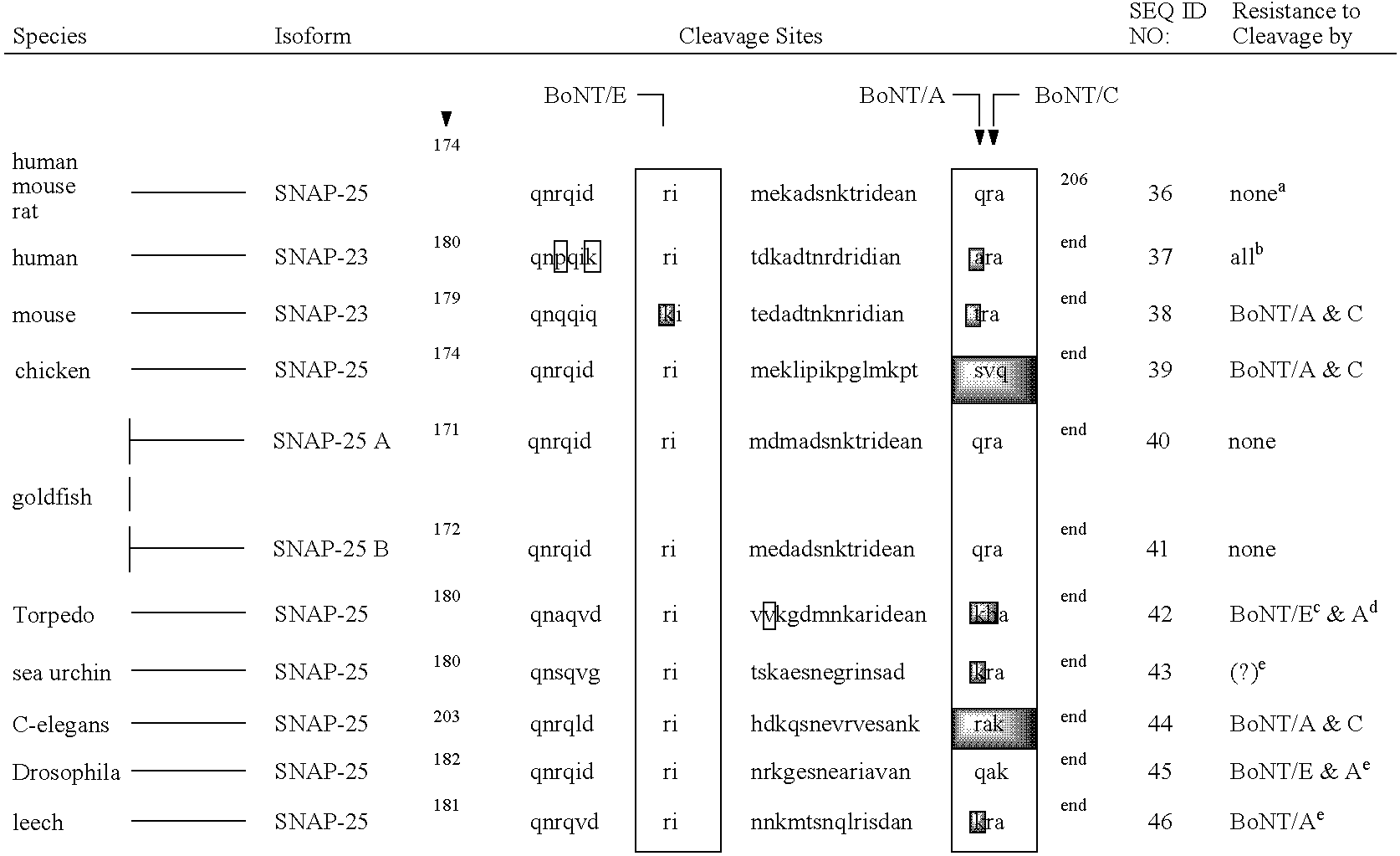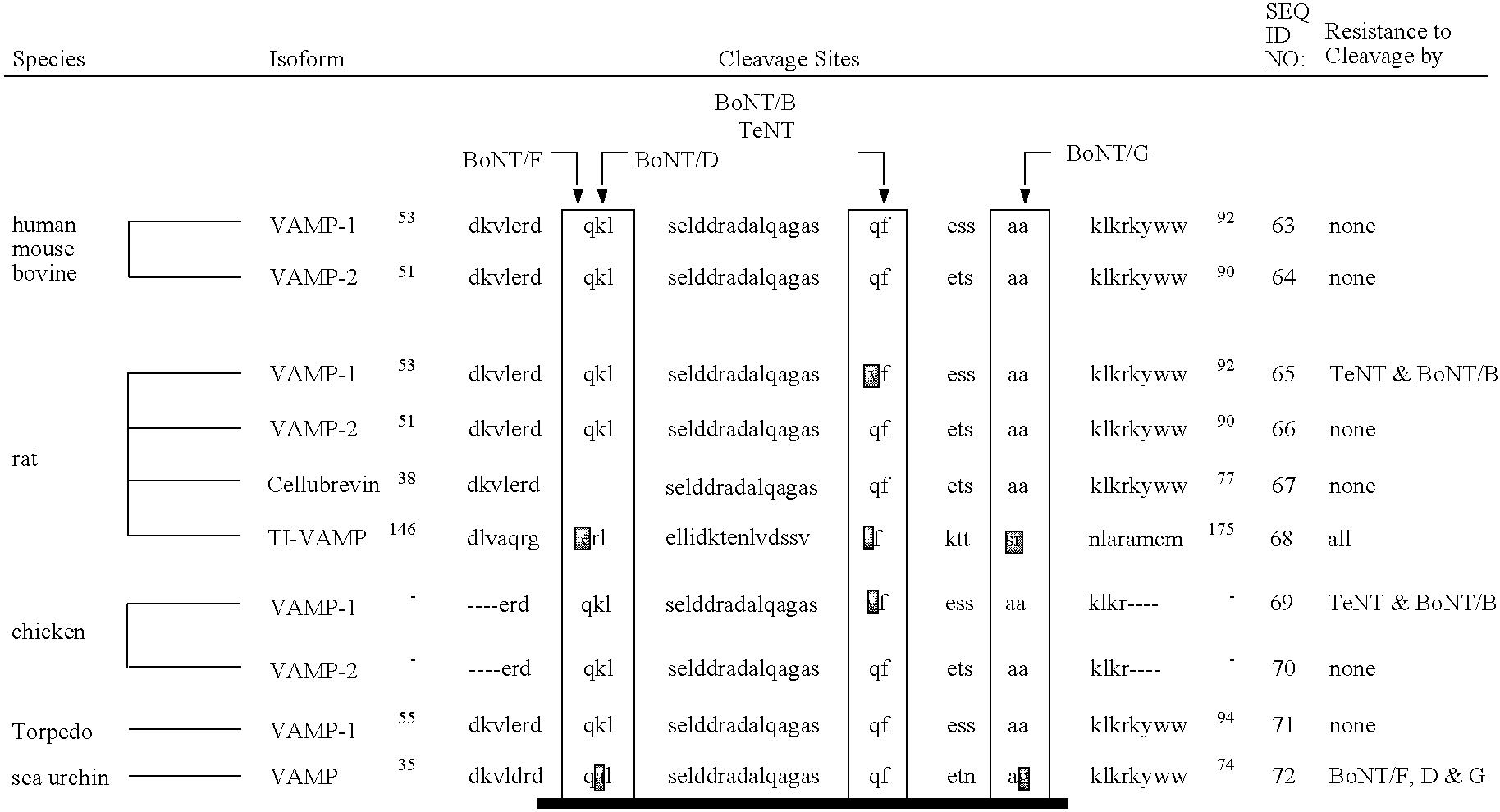Fluorescence polarization assays for determining clostridial toxin activity
a technology of clostridial toxin and fluorescence polarization, which is applied in the field of protease assays, can solve the problems of lack of specificity, large number of laboratory animals required, and suffers from mouse lethality assays
- Summary
- Abstract
- Description
- Claims
- Application Information
AI Technical Summary
Benefits of technology
Problems solved by technology
Method used
Image
Examples
example i
Preparation of GFP-SNAP25-His6-C- Alexa Fluor® 594 and GFP-SNAP25-His6-C- Alexa Fluor® 546 Substrates
[0141] This example describes construction of substrates suitable for assaying for the presence or activity of a clostridial toxin using fluorescence polarization.
A. Construction of GFP-SNAP25(134-206)-His6-C
[0142] A substrate was prepared as a fusion protein containing green fluorescent protein (GFP), murine SNAP-25 residues 134-206, a polyhistidine affinity tag (6×His), and a carboxy-terminal cysteine, with several components separated by peptide linkers. As described further below, the substrate was designed such that the GFP and terminal cysteine were present at opposite ends of SNAP-25(134-206).
[0143] The SNAP-25 sequence was obtained from pT25FL, a plasmid which contains the full-length mouse SNAP-25 gene inserted in frame with the 3′ terminus of the glutathione-S-transferase (GST) gene (GST-SNAP25(1-206)), provided by Professor Dolly (O'Sullivan et al., J. Biol. Chem. 274:...
example ii
Clostridial Toxin Complex Activity Assayed Using Fluorescence Polarization
[0156] This example demonstrates that a fluorescence polarization assay can be used to determine the presence or activity of a clostridial toxin.
[0157] The GFP-SNAP25(134-206)-His6-C protein labeled with Alexa Fluor® 594 was tested for its utility as a suitable substrate for BoNT / A reduced bulk toxin by recording the change in polarization over time. A Cary Eclipse spectrofluorometer (Varian, Inc.; Palo Alto, Calif.) equipped with motorized thin-film polarizers was used to monitor the reaction. The excitation wavelength was set at 590 nm, and polarized emission was recorded at 620 nm.
[0158] Several dilutions of BoNT / A bulk toxin or BoNT / A light chain were prepared, and fluorescence polarization monitored over time. For both bulk toxin and light chain, fluorescence polarization was reduced at or shortly after the time the diluted toxin was added. FIG. 9 shows the data for bulk BoNT / A toxin proteolysis of GFP...
example iii
Clostridial Toxin Complex Activity Assayed Using Fluorescence Polarization in Combination with Fluorescence Resonance Energy Transfer
[0160] This example demonstrates that fluorescence polarization can be assayed to determine the presence or activity of a clostridial toxin using a substrate which exhibits fluorescence resonance energy transfer.
[0161] The GFP-SNAP25(134-206)-His6-C protein labeled with Alexa Fluor® 546 as described above was utilized as a substrate for BoNT / A. As indicated above, the photoselection properties of GFP and Alexa Fluor® 546 provide for fluorescence resonance energy transfer (FRET) between the donor fluorophore GFP and the acceptor Alexa Fluor® 546. Steady-state polarization measurements were carried out in a Cary Eclipse spectrophotometer (Varian). Excitation was at 474 nm, the excitation maximum of the GFP component. Emission was measured at the Alexa Fluor® 546 fluorescence maximum of 570 nm. In all cases, a dual path length cuvette (10 mm by 2 mm) wa...
PUM
| Property | Measurement | Unit |
|---|---|---|
| fluorescence lifetime | aaaaa | aaaaa |
| fluorescence lifetime | aaaaa | aaaaa |
| fluorescence lifetime | aaaaa | aaaaa |
Abstract
Description
Claims
Application Information
 Login to View More
Login to View More - R&D
- Intellectual Property
- Life Sciences
- Materials
- Tech Scout
- Unparalleled Data Quality
- Higher Quality Content
- 60% Fewer Hallucinations
Browse by: Latest US Patents, China's latest patents, Technical Efficacy Thesaurus, Application Domain, Technology Topic, Popular Technical Reports.
© 2025 PatSnap. All rights reserved.Legal|Privacy policy|Modern Slavery Act Transparency Statement|Sitemap|About US| Contact US: help@patsnap.com



